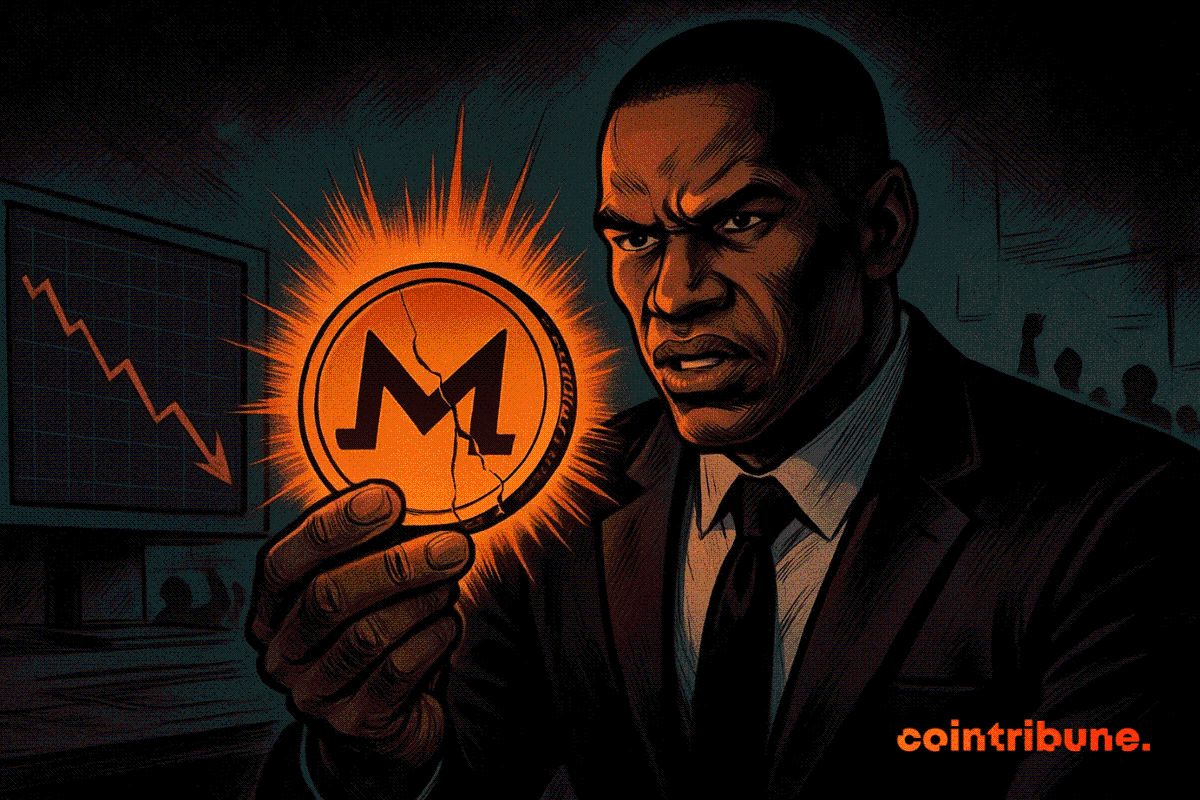Can Pump.fun’s Aggressive Buybacks Sustain PUMP’s Recovery Amid Legal and Market Risks?
- Pump.fun boosts PUMP token price via 30% revenue buybacks, reducing supply by 16.5% since July 2025. - Aggressive $58.7M August buyback drove 4% price rise but faces 92% revenue decline threatening sustainability. - $5.5B class-action lawsuit and SEC regulatory uncertainty challenge its "unlicensed casino" model. - Market bifurcation from institutional BTC/ETH ETFs intensifies PUMP's volatility amid Solana memecoin competition. - Analysts question long-term viability without revenue recovery, regulatory
The memecoin sector, a volatile and speculative corner of the crypto market, has seen Pump.fun emerge as a dominant force through its aggressive token buyback strategy . By allocating 30% of platform revenue—primarily from fees on Solana-based memecoin launches—to repurchasing its native PUMP token, Pump.fun has reduced circulating supply by 16.5% since July 2025, with 60% of repurchased tokens burned and 40% distributed as staking rewards [1]. This deflationary approach has driven a 12% price increase over the past month and a 54% rebound from its August low [1]. Yet, the question remains: is this a sustainable model, or merely a temporary fix in a market rife with legal and financial risks?
The Mechanics of Pump.fun’s Buyback Strategy
Pump.fun’s buyback program is funded by a 1% transaction fee on Solana memecoin trades, with 30% of that revenue directed to token repurchases. Between August 20 and 26, 2025, the platform spent $58.7 million to repurchase 4.261% of the circulating supply, reducing total supply and triggering a 4% price increase [1]. This strategy has created a flywheel effect: reduced supply, higher prices, and increased trading activity. The platform’s market share in Solana memecoin launches has surged to 73%, capturing 77.4% of trading volume and 62% of sector revenue [1].
However, the financial sustainability of this model is under scrutiny. A single-day buyback of $12 million in August 2025 consumed 99.32% of the platform’s $10.66 million weekly revenue [2]. With weekly income now at $1.72 million—a 92% drop from its January 2025 peak—Pump.fun’s ability to maintain its buyback pace is questionable [3]. Analysts project that if the platform sustains a 25% buyback rate of weekly revenue, it could generate $134.6 million in annual buyback pressure, but this assumes stable or growing revenue, which is far from certain [5].
Legal and Regulatory Risks
Pump.fun’s aggressive buybacks have not shielded it from legal challenges. A $5.5 billion class-action lawsuit alleges the platform operates as an “unlicensed casino,” engaging in unregistered securities activity and misleading marketing [1]. These claims mirror broader regulatory scrutiny of Solana-based memecoins, with the U.S. SEC and U.K. FCA increasingly targeting projects for lack of compliance [6]. The SEC’s refusal to classify Solana’s native token, SOL, as a security has further muddied the regulatory landscape, creating uncertainty for platforms like Pump.fun [3].
Regulatory risks are compounded by the speculative nature of memecoins. Unlike traditional assets, which derive value from fundamentals, memecoins rely on algorithmic scarcity and community-driven incentives. While this model can create short-term price appreciation, it lacks the transparency and stability of traditional markets [4]. For instance, the PUMP token’s 54% rebound was followed by a 58% drop in value after a significant buyback, illustrating the fragility of price movements driven by repurchase activity [5].
Broader Market Context and Long-Term Viability
The memecoin sector’s volatility is exacerbated by its bifurcation from institutional markets. The approval of Bitcoin ETFs in 2025 has redirected 67% of institutional portfolios to BTC and ETH, leaving retail investors to speculate on assets like PUMP [2]. This dynamic has intensified price swings, as seen in MemeCore’s 4,445% weekly surge followed by a 5.98% correction [2]. Pump.fun’s dominance in the Solana ecosystem—capturing 84.1% of trading volume in recent months—suggests it has tapped into a resilient niche, but competition from platforms like LetsBonk (which has captured 69-75% of the market in some periods) threatens its position [6].
Conclusion: A Temporary Fix or a Sustainable Narrative?
Pump.fun’s buyback strategy has undeniably stabilized PUMP’s price in the short term, but its long-term viability hinges on three factors:
1. Revenue Sustainability: The platform must reverse its 92% revenue decline to fund ongoing buybacks without straining its balance sheet [3].
2. Regulatory Navigation: Legal challenges, including the $5.5 billion lawsuit, could disrupt tokenomics and investor confidence [1].
3. Market Leadership: Maintaining dominance in the Solana memecoin launchpad market is critical, as competition intensifies [6].
While Pump.fun’s model mirrors traditional buyback strategies—reducing supply to boost value—it operates in a uniquely speculative environment. For investors, the lesson is clear: treat PUMP and similar memecoins as high-risk, high-reward assets rather than long-term investments. Until regulatory clarity emerges and revenue streams stabilize, Pump.fun’s buybacks may offer temporary relief but cannot guarantee lasting recovery.
Source:
[1] Pump.fun Spends $62 Million on Token Buybacks Amid Legal Challenges
[6] Pump.fun Regains Top Spot in Solana Memecoin Launchpad Rankings, [https://www.bitget.com/news/detail/12560604942162]
Disclaimer: The content of this article solely reflects the author's opinion and does not represent the platform in any capacity. This article is not intended to serve as a reference for making investment decisions.
You may also like
Can the 40 billion bitcoin taken away by Qian Zhimin be returned to China?
Our core demand is very clear—to return the assets to their rightful owners, that is, to return them to the Chinese victims.

Bitcoin Surges but Stumbles: Will Crypto Market Recover?
In Brief Bitcoin fails to maintain its position above $93,000 and faces heavy selling pressure. Altcoins experience sharp declines, with some showing mixed performance trends. Shifts in U.S. spot Bitcoin ETF flows highlight cautious investor behavior.

Qubic and Solana: A Technical Breakthrough by Studio Avicenne
